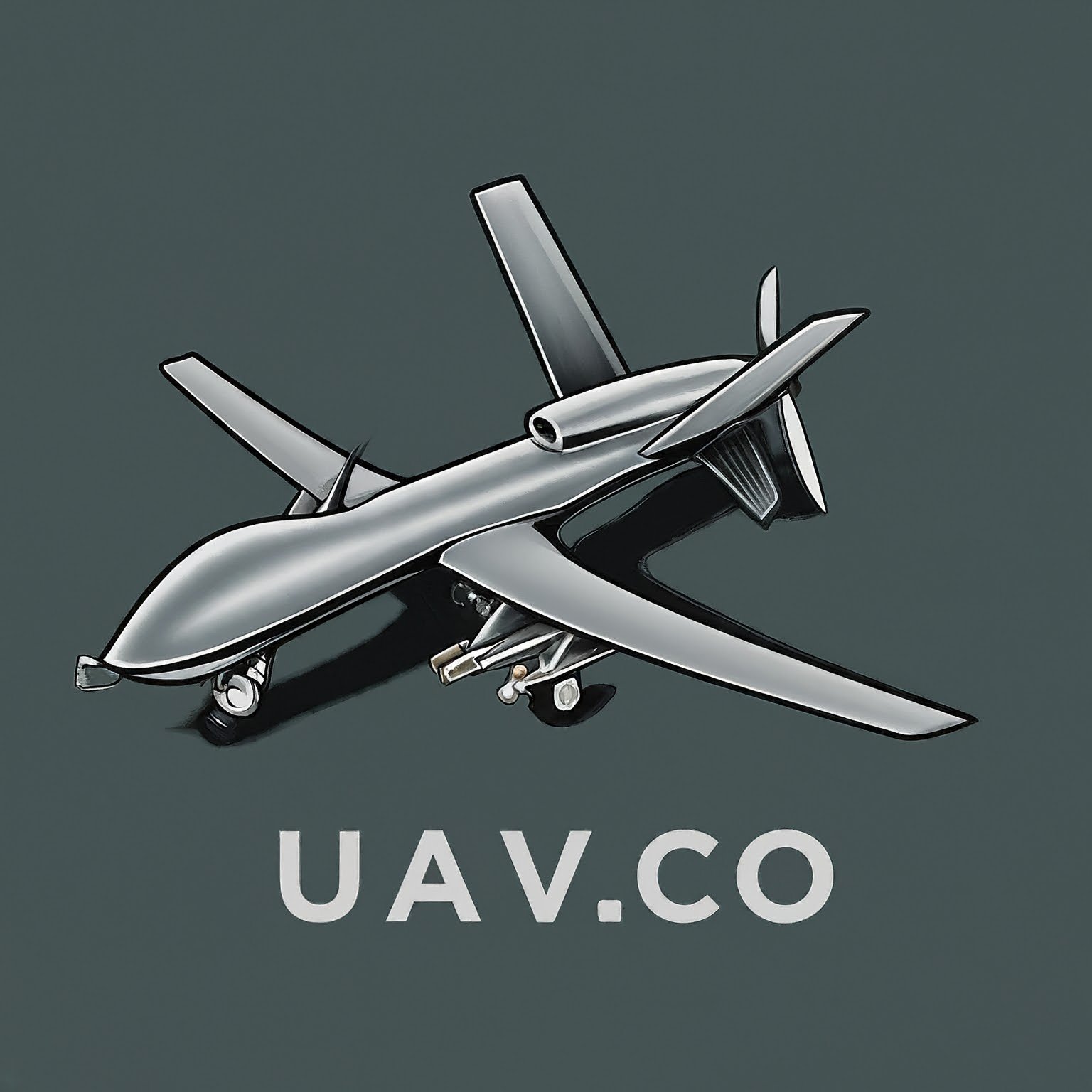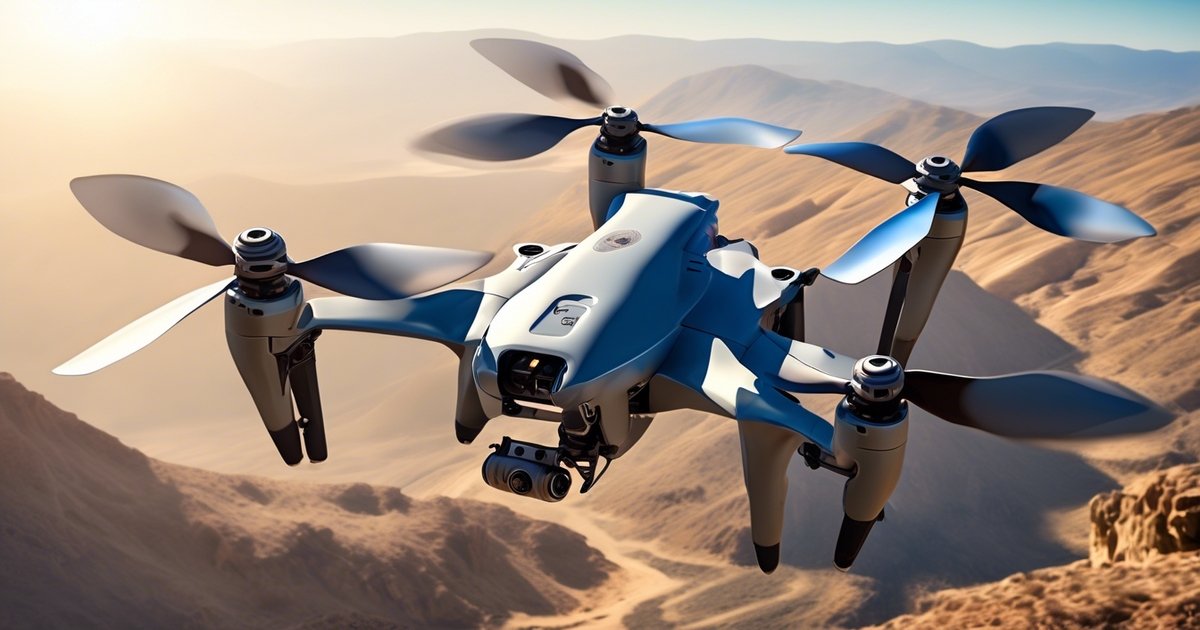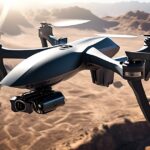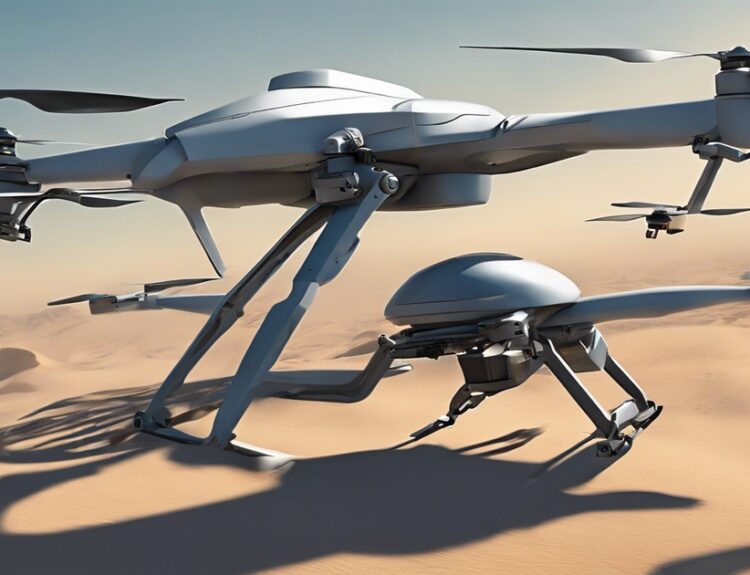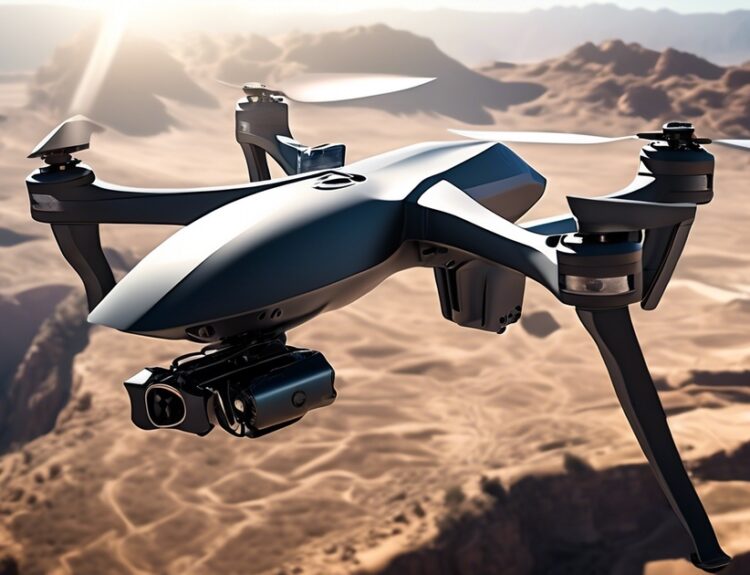The integration of artificial intelligence (AI) and machine learning into military drones and manned aircraft represents a significant leap forward in defense technology for the armed services, enhancing capabilities while reshaping strategic operations and introducing the concept of killer robots. This evolution not only streamlines reconnaissance and surveillance but also introduces unprecedented precision in drone warfare, including drone strikes and manned aircraft, in strike missions. As nations invest heavily in AI-driven systems, including machine learning and computer vision, the implications for future warfare, drone wars, and global security dynamics are profound. Understanding these applications, including computer vision, machine learning, and drone warfare in defense, reveals the dual-edged nature of technological advancement—offering both groundbreaking solutions and complex ethical considerations.
Key Takeaways
-
AI integration into military drones significantly enhances their operational capabilities, allowing for more efficient and autonomous missions, which underscores the importance of continuous innovation in AI technologies for defense purposes.
-
The development of autonomous features in military drones, powered by AI, not only increases operational efficiency but also minimizes human error, making it crucial for military strategists to stay abreast of advancements in AI to maintain a tactical advantage.
-
Ethical considerations and the regulation of lethal autonomous weapons are paramount, highlighting the need for clear international guidelines and ethical frameworks to govern the use of AI in military drones to ensure responsible deployment.
-
The enhancement of security surveillance through drone AI technology offers unparalleled situational awareness, yet it also necessitates robust cybersecurity measures to protect against potential vulnerabilities and threats.
-
As AI continues to shape the future of drone warfare, understanding its implications, opportunities, and challenges becomes essential for defense analysts, policymakers, and military personnel to navigate the evolving landscape of modern warfare effectively.
-
It’s critical to balance the technological advancements in AI with ethical considerations and regulatory measures to mitigate risks associated with AI in drone warfare, ensuring that such technologies are used responsibly and for the greater good.
AI’s Impact on Military Drone Operations
Real-Time Analysis
AI technology, including computer vision, allows for the real-time analysis of data during air force drone missions for defense in wars. This capability is crucial in dynamic combat environments. Operators receive immediate insights, enabling quick decisions.
The use of AI and computer vision in drones transforms how information is processed in wars by states. Instead of waiting hours or days for data interpretation, AI systems analyze and present findings instantly. This speed enhances mission effectiveness.
Target Identification
Enhanced target identification is another benefit of integrating AI with military drones. Machine learning algorithms in drone AI technology improve accuracy over time by learning from past missions, enhancing drone warfare effectiveness in drone wars and strikes.
This advancement in drone AI technology reduces the risk of errors in identifying targets for drone strikes, which can save lives and prevent unintended damage in drone warfare. The precision offered by AI-driven systems in drone warfare far exceeds human capabilities alone.
Operational Efficiency
AI significantly increases operational efficiency while reducing human error in drone operations. Drones equipped with AI require less manual intervention, allowing for longer and more complex missions without fatigue-related mistakes.
-
Pros:
-
Reduced need for direct control
-
Lower risk of errors
-
Ability to handle complex tasks
-
-
Cons:
-
High initial setup cost
-
Need for continuous algorithm updates
-
Integration of AI into Military Drone Systems
Autonomous Navigation
AI integration allows drones to navigate autonomously. This is crucial for military operations. Drones can now fly without direct human control. They use drone AI technology, neural networks, and algorithms to process data from their environment for drone warfare.
This technology enables drones to make real-time decisions during flight. It enhances drone AI technology’s ability to avoid obstacles and adjust routes instantly in drone wars. The armed services benefit from increased operational efficiency and safety through drone AI technology.
Communication Networks
AI algorithms are vital in improving drone communication networks. These networks enable better coordination among multiple drones. Enhanced communication supports complex military missions involving groups of drones.
Such improvements allow for seamless information sharing between drones and human operators. The air force, in particular, sees significant benefits as this facilitates coordinated strikes with precision.
Upgrading Drones
Extending the lifecycle of existing military drones is possible through AI upgrades.
-
Existing devices gain new capabilities.
-
Soldiers benefit from enhanced performance without needing entirely new hardware.
The idea here is cost-effectiveness paired with technological advancement. Software updates incorporating advanced AI programs can revitalize older models, making them relevant in modern warfare contexts again.
Autonomous Features in Military Drones Enhanced by AI
Self-Navigation
Military drones equipped with AI can navigate without GPS. This is crucial in areas where GPS signals are weak or jammed. Drones use machine learning to understand their environment and move accurately.
This technology ensures that drones reach their targets even when traditional navigation systems fail. Countries are increasingly adopting this for missions in challenging terrains.
Threat Assessment
AI-driven threat assessment allows drones to make quick decisions during missions. They analyze data in real-time to identify threats. This capability enables immediate response actions against potential dangers.
Such autonomous systems reduce the need for manned aircraft in risky situations. They ensure military operations are both effective and safe for human operators.
Automated Processes
Drones now perform takeoff, flight, and landing autonomously thanks to AI. These processes were once manually controlled but now benefit from artificial intelligence’s precision and reliability.
Automated flight processes allow drones to operate with minimal human intervention. This increases efficiency and reduces the chances of error during critical military operations.
Ethical Considerations of AI in Military Drones
Decision-Making Autonomy
The integration of AI in military drones raises significant concerns regarding decision-making autonomy. The prospect of drones conducting lethal operations independently is alarming. There’s a fine line between efficiency and morality.
AI-driven drones can process information faster than humans. They react to threats swiftly. However, the lack of human judgment in life-or-death scenarios poses ethical dilemmas. Humanitarian groups argue for strict regulations on autonomous lethal decisions.
Accountability Issues
Ensuring accountability for actions taken by AI-equipped military drones is challenging. Identifying responsibility when an autonomous drone makes a controversial decision is complex.
Military commands rely on clear chains of command and responsibility. Integrating AI complicates this structure. When an AI system autonomously decides to engage, pinpointing who or what to hold accountable becomes murky.
Technological vs Humanitarian
Balancing technological advancements with humanitarian laws forms another ethical consideration area for military drones’ use of AI.
Modern warfare increasingly incorporates technology, pushing boundaries previously unimaginable. Despite these advancements, compliance with international humanitarian laws remains paramount.
Military strategists must ensure that the deployment of AI-powered drones does not violate established humanitarian principles.
-
Pros:
-
Faster threat response
-
Reduced risk to human soldiers
-
-
Cons:
-
Potential for unregulated lethal force
-
Challenges in aligning with humanitarian laws
-
Security Surveillance Enhanced by Drone AI Technology
Advanced Recognition
Drone AI technology has transformed security surveillance. It employs advanced recognition software. This software sifts through vast data sets quickly. It identifies threats that humans might miss.
Drones equipped with computer vision can monitor extensive areas effectively. They look for unusual activities or items in real-time. This capability is crucial for defense and government operations.
Continuous Monitoring
One of the standout benefits of drone AI in surveillance is its 24/7 monitoring capability. Drones do not experience fatigue like human operators do. They can patrol an area continuously without breaks.
This round-the-clock surveillance ensures there’s no lapse in security coverage. It’s especially valuable in sensitive zones where constant vigilance is essential.
Anomaly Detection
Real-time anomaly detection represents a significant shift in how security breaches are prevented. Drone AI systems analyze video feeds on-the-fly to spot deviations from normal patterns.
The moment an anomaly is detected, the system alerts human operators. This prompt response time drastically reduces the chances of successful breaches. Drones have become indispensable tools in maintaining high-security standards across various sectors.
The Role of AI in Future Drone Warfare
Predictive Analytics
AI significantly boosts drone warfare through predictive analytics. This technology allows for preemptive strike strategies. Military planners can predict enemy movements with high accuracy. They use vast data sets and machine learning algorithms.
Predictive analytics helps in making informed decisions quickly. It reduces the risk of civilian casualties and collateral damage.
Swarm Technology
Swarm technology is another key advancement. It enables coordinated attacks with minimal human input. Drones communicate among themselves to execute complex missions.
This coordination increases efficiency and effectiveness on the battlefield. Attacks become more precise, reducing unnecessary destruction.
Enhanced Stealth
Intelligent evasion tactics improve stealth operations for drones. AI-driven drones can detect threats earlier and navigate away from them unnoticed.
These capabilities make drones harder to detect and shoot down by enemy forces. As a result, they have a higher success rate in missions requiring stealth.
Risks and Recommendations for AI in Drone Warfare
Hacking Mitigation
To combat the risk of hacking, rigorous security measures are essential. Military drones equipped with AI must have state-of-the-art encryption. This prevents unauthorized access. Regular security audits should be conducted to identify vulnerabilities.
Furthermore, developing anti-hacking software is crucial. Such software can detect and neutralize threats in real-time. These steps ensure that control remains solely with authorized personnel.
Human Oversight
Establishing protocols for human oversight is another critical step. Despite AI’s capabilities, human judgment remains invaluable. Protocols should dictate how and when humans intervene in drone operations.
Training programs for operators are necessary too. They ensure that personnel can effectively oversee AI systems. This balance between automation and human decision-making enhances both efficiency and ethical considerations.
Ethical Guidelines
Updating ethical guidelines continuously is vital as technology evolves rapidly. New developments may present unforeseen challenges or dilemmas. A dedicated committee could oversee these updates, ensuring guidelines remain relevant.
This committee might include ethicists, technologists, and military experts. Their collective expertise would guide the responsible use of AI in drones. Regular reviews would adapt ethics to technological advancements.
Regulation of Lethal Autonomous Weapons Using AI
International Agreements
To manage the rise of AI in military drones, nations must agree on use cases. These agreements will define when and how these drones can be used. This step is crucial for preventing misuse.
Countries need to collaborate. They should create rules that balance safety with technological progress. Without consensus, unilateral actions could lead to global security risks.
Global Standards
Developing standards for transparency and accountability is essential. These standards will guide countries in deploying AI-powered lethal autonomous weapons responsibly.
The focus should be on creating clear guidelines. These would cover reporting mechanisms and oversight procedures. Such measures ensure all parties understand their responsibilities and the consequences of violations.
Enforcement Mechanisms
Enforcing compliance with international regulations is challenging but necessary. Various mechanisms, including sanctions and diplomatic pressure, can help ensure adherence to agreed-upon norms.
Effective enforcement relies on robust verification systems. Countries must work together to monitor compliance actively.
Implementing these measures requires a concerted effort from all stakeholders involved in drone warfare technology development, deployment, and regulation.
Closing Thoughts
The integration of artificial intelligence (AI) into military drone operations marks a significant evolution in modern warfare, enhancing capabilities while also introducing complex ethical and security considerations. AI’s role in improving autonomous features, surveillance, and decision-making processes in drones underscores its potential to redefine military strategies. However, the ethical dilemmas and risks associated with autonomous lethal weapons demand rigorous scrutiny and robust regulatory frameworks to ensure their responsible use. The future of drone warfare, heavily reliant on AI, hinges on balancing technological advancements with ethical imperatives and security measures.
As the landscape of military drone technology continues to evolve, it is imperative for stakeholders to engage in ongoing dialogue and collaboration. Policymakers, technologists, and ethicists must work together to navigate the challenges posed by AI in military drones, ensuring that advancements contribute positively to national defense while safeguarding human rights and international peace. The call to action is clear: a concerted effort is required to address the multifaceted implications of AI-driven drone warfare, paving the way for a future where technology serves humanity’s best interests.
